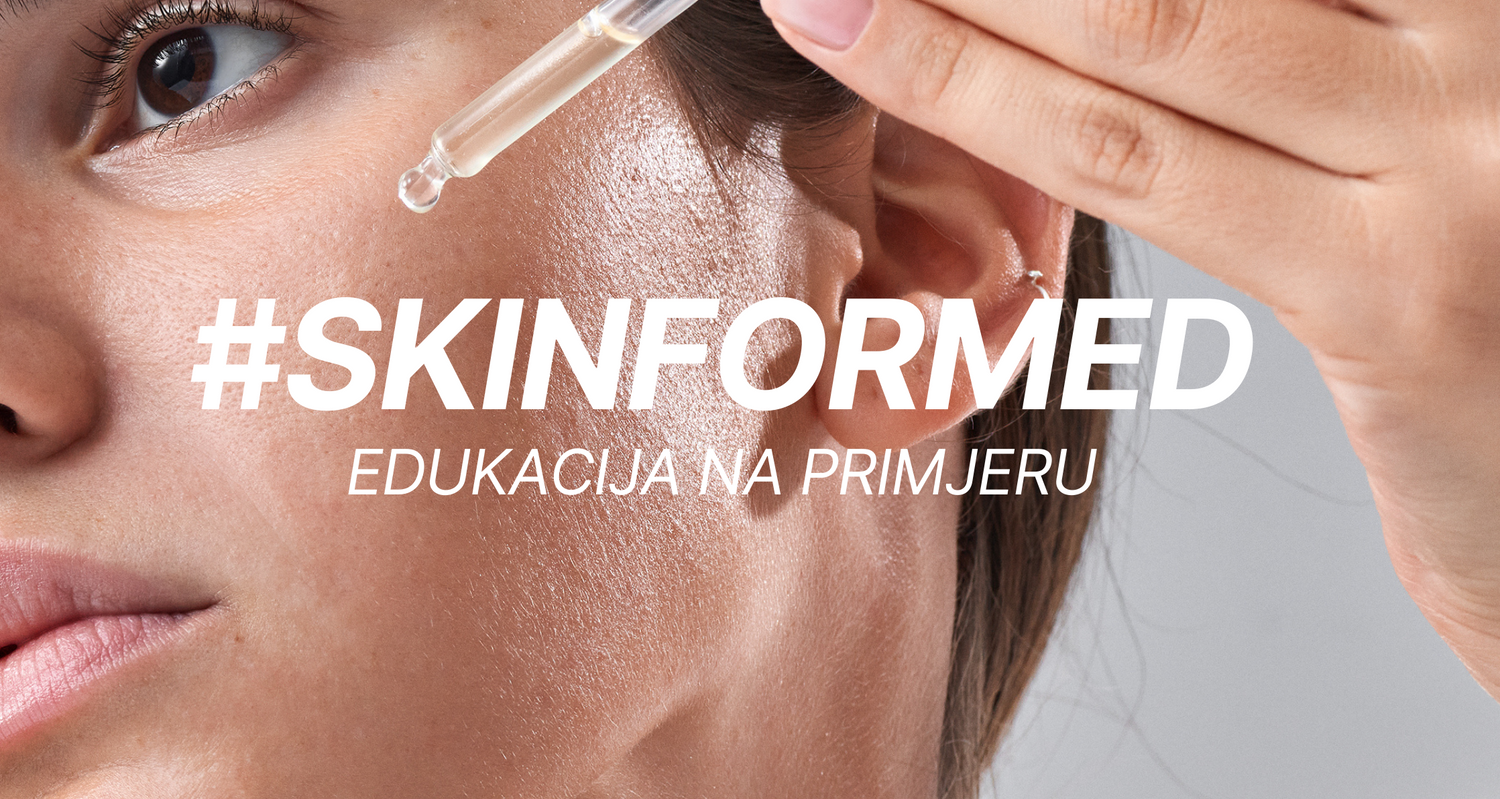Neda L., 36 years old
Skin type : Oily
Main skin challenges : non-inflammatory acne (closed comedones and blackheads), brown spots (from the sun, pregnancy, hormonal contraceptives...), skin texture (pores), dehydration (flaking and tightening), seborrhea (too much sebum), surface wrinkles
Describe your skin: what do you want to work on?
" My skin is dry and oily at the same time . Redness present with the appearance of small pimples. Blackheads and pigmentation spots as a result of pregnancy (even though I use the UV factor every day). Because of all this, I have to wear foundation every day, and in the summer this is almost impossible."

Recommended routine :
| Morning | In the evening |
| Atomic | |
| Superb C | Amphibia |
| Solar I | Tria Light |
What does it mean when the skin is dry and oily at the same time?
Skin type is mostly genetically determined and unchangeable, but under the influence of various external and internal factors, the skin can suffer from variable conditions that we can influence. In the photo that Neda sent us, we can see that it is an oily skin type. The main visible characteristics of oily skin type are enlarged pores over a larger area and an oily shine. The described "dryness" results from a temporary feeling of dehydration, which can also be present on oily skin due to the use of overly aggressive and drying products or due to staying at high or low temperatures, in which case it is desirable to replenish the skin's moisture.
For such a case, our Tria Light cream is an excellent choice, because it simultaneously nourishes and hydrates, but also treats irregularities, spots and pimples and regulates excessive oiliness of the skin. Thanks to the formulation that contains a combination of niacinamide, zinc PCA and two forms of vitamin E, Tria Light reduces the appearance of new pimples and restores damaged skin, i.e. the spots that remain after pimples. The silky and fast-absorbing texture enriched with panthenol and glycerin deeply moisturizes and soothes the skin.

Treating hyperpigmentation during the summer
A very common skin change in a large number of women during pregnancy is localized hyperpigmentation that occurs under the influence of hormones, and can intensify due to exposure to UV radiation. In some cases, pregnancy hyperpigmentation gradually recedes after childbirth, and sometimes it persists and is difficult to pass. When treating hyperpigmentation, the most important thing is the regular daily and abundant use of products with a high protection factor that protects against a wide spectrum of UV radiation (UVA + UVB), along with the use of other photoprotection methods such as sunglasses and hats, as well as maximum avoidance of sun exposure and daily monitoring of the UV index.
Our recommendation is Solar I, a light and moisturizing SPF 30 fluid that protects the skin from a wide spectrum of UV radiation and maximally prevents the appearance of new and darkening of existing hyperpigmentation spots. The ideal daily combination for blotchy skin tone is Superba C + Solar I. Superba C is a powerful antioxidant serum that contains vitamins C and E and ferulic acid, acts as a melanin inhibitor, helps even out skin tone and enhances the photoprotective effect of products with a protective factor. The vitamin C derivative from Superba C, sodium ascorbyl phosphate or SAP, is not photosensitizing, that is, it does not make the skin more sensitive to the sun, so it can be used throughout the summer. The watery, light texture is quickly absorbed and does not contribute to the feeling of heaviness on oily skin.

Remember, oily skin needs hydration too, but adapted so that you choose products that have cleverly rounded formulas with multiple effects to give your skin everything it needs, and avoid a layered routine, especially during the summer months when oily skin suits as few products as possible. When the skin tone is also accompanied by hyperpigmentation changes, protect your skin adequately and behave responsibly in the sun so that you can see results.

